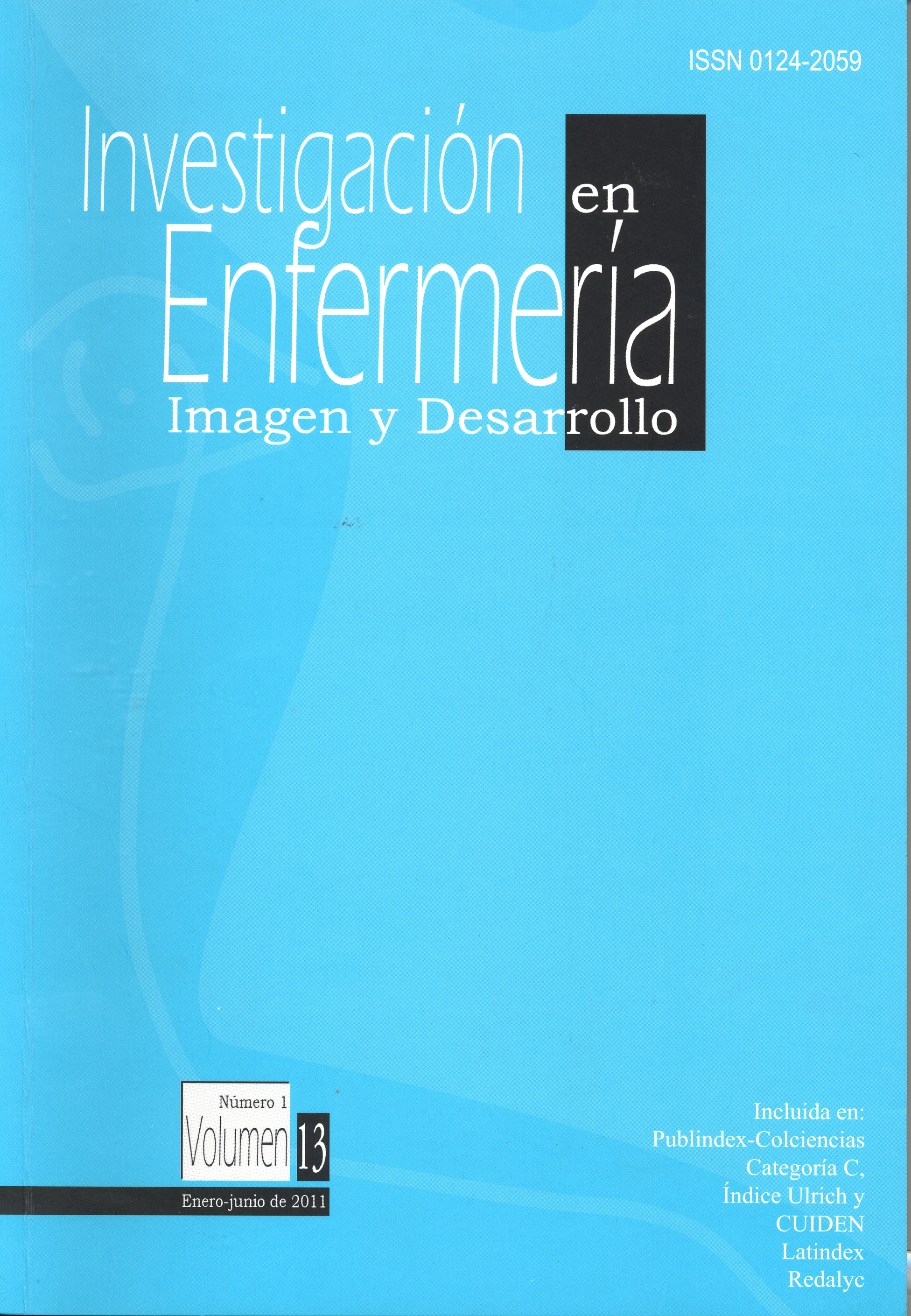Abstract
The article presents the results of an investigative process undertaken as part of the research group hotbed of Nursing Chronic-Patient Care of Universidad Nacional de Colombia at Instituto de Ortopedia Infantil Roosvelt (IOIR) during the first half of 2010. This was a qualitative and descriptive research aiming to describe the social support for family caregivers of children with chronic illness through the use of telephone (fixed-mobile) and/or text messages in the follow-up discharge plan. This was achieved through the development and implementation of a tool that facilitated providing social support and strengthening the care from caregivers through monitoring at home. The study involved the participation of nine caregivers of children with chronic disease from six months to ten years attending this medical institution. Each of these subjects underwent telephone follow-up, which was necessary for the design and implementation of a guide entitled Cuido Cuidándome. It was intended to address different aspects of social support; including different ways to allow the caregiver recognize the importance of their role. After Telephone follow-up, five of the nine caregivers participating in the research underwent semi-structured interviews. These interviews were recorded and later transcribed for content analysis and comparison with literature. From this process, five categories were dreawn up: recognition of Information and communication technology (telephone or text messaging) following-up the exit plan, social support, other means for receiving social support, utility of information and communication technology, adn recognition of the situation as a caregiver. It was successfully identified that there are significant dimensions of social support for the caregiver. In this case, personal interaction and guidance were meaningful because the information, the education and the emotional support provided by means of the ICT's were tools to facilitate their coping with the situation of health, home care and ,onotoring of the discharge plan by the nurse. The information and communication technology used is evidence that, despite not being an nnovative technology, the phone considerably facilitates continuity of care to home nursing from the established exit plan for each patient and caregiver.
The journal Investigación en Enfermería: Imagen y Desarrollo is registered under a Creative Commons Attribution 4.0 International Public License. Thus, this work may be reproduced, distributed, and publicly shared in digital format, as long as the names of the authors and Pontificia Universidad Javeriana are acknowledged. Others are allowed to quote, adapt, transform, auto-archive, republish, and create based on this material, for any purpose (even commercial ones), provided the authorship is duly acknowledged, a link to the original work is provided, and it is specified if changes have been made. Pontificia Universidad Javeriana does not hold the rights of published works and the authors are solely responsible for the contents of their works; they keep the moral, intellectual, privacy, and publicity rights.
Approving the intervention of the work (review, copy-editing, translation, layout) and the following outreach, are granted through an use license and not through an assignment of rights. This means the journal and Pontificia Universidad Javeriana cannot be held responsible for any ethical malpractice by the authors. As a consequence of the protection granted by the use license, the journal is not required to publish recantations or modify information already published, unless the errata stems from the editorial management process. Publishing contents in this journal does not generate royalties for contributors.


